Top 10 Best Buildings in Movies
Check out some of our favorite buildings from our movie library!
The Bradbury Building from "Blade Runner," etc.
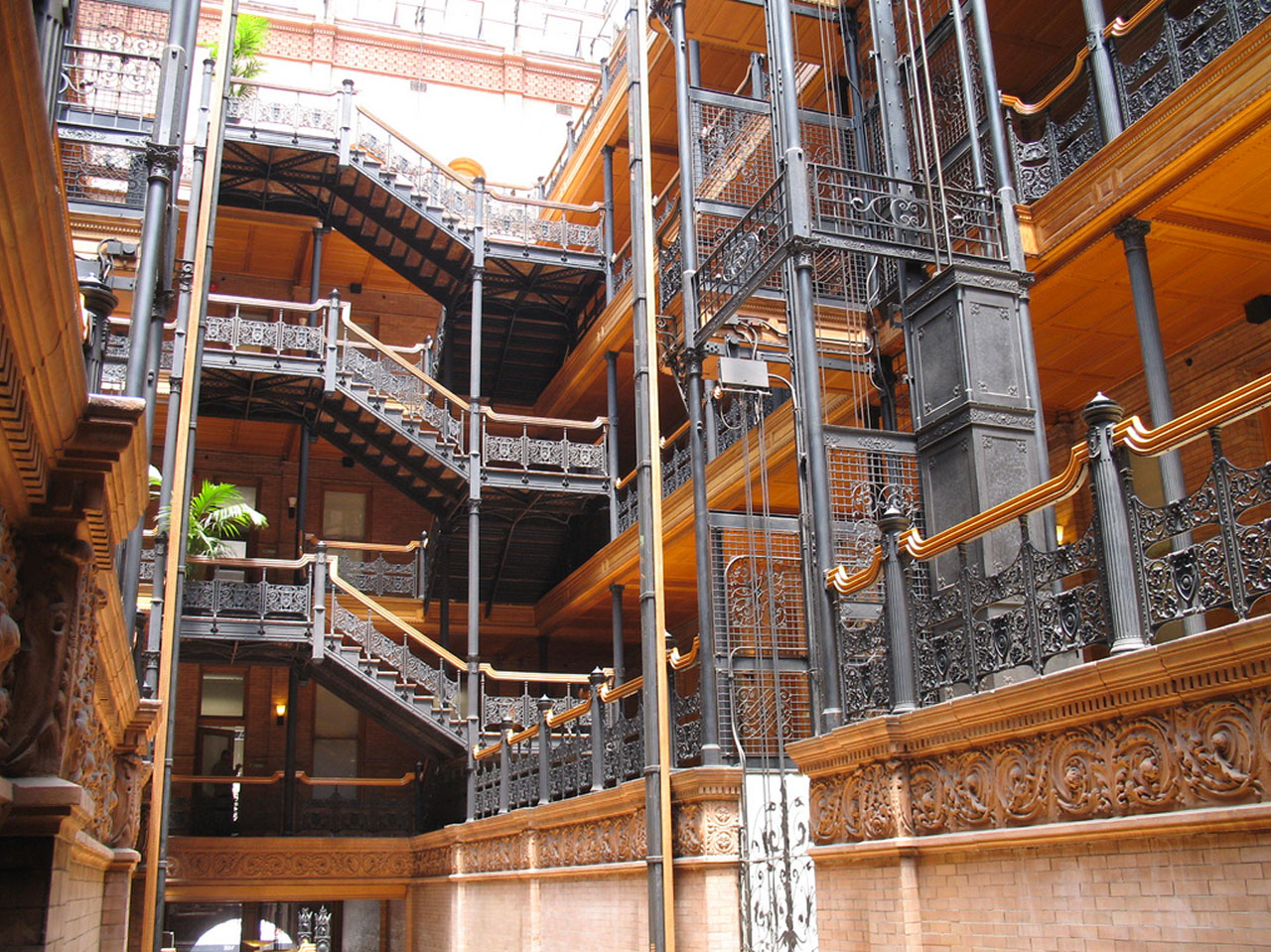 Interior shot of the Bradbury Building showing lattice work. Photo by Luke Jones
Interior shot of the Bradbury Building showing lattice work. Photo by Luke Jones
-
The Bradbury Building, in Los Angeles, California, was built in 1893, and is known to film buffs for its larger interior court and five-story atrium, festooned with wrought-iron filigree. Used extensively in films including "Double Indemnity" and "Chinatown," the Bradbury is most recognizable as J.F. Sebastian’s apartment building in "Blade Runner". It was commissioned by Lewis L. Bradbury, who fired original architect Sumner Hunt and promoted draughtsman George Wyman to head the project. According to lore, Wyman signed on only after consulting a planchette board (similar to a Oui-Ja board) and receiving the message “Take the Bradbury building and you will be successful.” In a strange coincidence, Wyman’s grandson, beloved sci-fi publisher Forrest J. Ackerman, was friends with author Ray Bradbury, no relation to Lewis.
-
"Before Midnight," the third film in Richard Linklater’s ongoing collaboration with actors Ethan Hawke and Julie Delphy, examines the intersecting lives of rakish writer Jesse and environmentalist Celine, respectively, nine years after the events of the previous entry in the series, "Before Sunset" (which was set 9 years after the original film, "Before Sunrise"). Now a couple with twin daughters, Jesse and Celine spend the early stretch relaxing at a friend’s sprawling and gorgeous house on the Peloponnese peninsula in Greece. As the unhurried conversations unfold and the usual frictions resurface, the scene of the action shifts to a sterile hotel room, and the film becomes emotionally and physically claustrophobic, a turn made all the more effective due to the expansive, natural beauty of the previous setting. This initial location, which in the fictional narrative is owned by one of Jesse’s writer friends, has a literary pedigree itself: It was the home of colorful British travel writer Patrick “Paddy” Leigh Fermor until his death in 2011, and in his will he left the property to Athens’ Benaki Museum, with the proviso that it would be kept up as a retreat for writers who migh wish to spend some time working in the lush surroundings. At the time of this writing, allegations have been leveled against the Benaki Museum, claiming that the property has fallen into disrepair and isn’t being used as Fermor wished. By all accounts, Greece’s recent economic downturn is at the root of the problem, and for now the house sits crumbling. Fermor, for his part, is considered a hero in the region, famous for leading a successful mission to abduct and remove German General Heinrich Kreipe from his station in Crete.
-
One of the most imposing and memorable movie locations, repeatedly cited as a character in and of itself, would have to be the Overlook Hotel, setting of Stanley Kubrick’s adaptation of "The Shining," by Stephen King. The Overlook Hotel that appears on screen is an amalgamation: the interiors, among the largest sets ever built at the time, were constructed on soundstages at EMI Elstree Studios in Borehamwood, U.K., and the exteriors were shot at The Timberline Lodge on Mount Hood in Oregon. The establishment that actually inspired King to write the novel, The Stanley Hotel in Estes Park, Colorado, was itself used as a location for the 1997 television mini-series based on the book that King produced as a remedy to Kubrick’s iconic adaptation, which King has disavowed as unfaithful to the spirit of his novel, saying the film “never gets you by the throat and hangs on the way real horror should.”
-
The Sheats Goldstein Residence was completed in 1963 but subsequently remodeled over decades by owner James Goldstein and architect John Lautner. The portion of the property made famous in "The Big Lebowski" as the swinging bachelor pad of pornographer Jackie Treehorn is the pool-adjacent lounge area, with its sweeping high concrete ceiling and long, built-in bench seating. The house, like much of Lautner’s work, was designed to erase the disconnect between the manmade structure and its surroundings, in this case a lush hillside affording unmatchable views of Los Angeles. Down the hill from the house, Goldstein’s property also boasts an art installation known as "Above Horizon" or "The Goldstein Skyspace." Designed by James Turrell, the installation affords a unique perspective on dawn and dusk via strategically placed windows and a timed lighting display intended to contrast with the colors of sunrise and sunset.
-
It’s hard to say which is more integral to the sinister mood that from its opening frames permeates Roman Polanski’s 1968 film of Ira Levin’s bestselling novel, "Rosemary’s Baby": the lilting and childlike but no less ominous tones of Krzysztof Komeda’s haunting theme music or the helicopter shots of New York City, which suggest an otherworldly force on the prowl for human prey, eventually settling on The Dakota (called The Bramford in the film), an apartment building whose gable-crowded roofs and copious balustrades conjure a feeling of old-world elegance with an undercurrent of gothic menace. Characterized at street level by its South Entrance, a large, gated porte-cochère leading into a courtyard at its center, The Dakota has been a sought-after place of residence since it first opened in 1884 with all apartment spaces pre-sold. It is unlikely the young thespian and his stay-at-home wife, portrayed in the movie by John Cassavetes and Mia Farrow, would be able to afford rooms in The Dakota on an actor’s salary. Offscreen, the building has its own macabre history: John Lennon, who kept apartments there from 1973 to 1980, was murdered on the sidewalk outside.
-
A historical landmark and still a functioning firehouse, Hook & Ladder #8, at the intersection of Varick and Moore streets in TrBeCa, will be instantly recognizable to filmgoers of a certain age as the home of the Ghostbusters. In the 1984 film, the station is used as the exterior of the eponymous team’s headquarters. Interiors were shot at a retired firehouse in Los Angeles, as Hook and Ladder #8 was active during the shooting of the film. Erected in 1904 and cut in half in 1913 when Varick Street was widened, it remains in use today despite its 2011 placement by New York Mayor Michael Bloomberg on a list of firehouses to be closed as a budgetary measure.
-
Another John Lautner building to receive a star turn, the Elrod House in Palm Springs, California, stands out as one of the more opulent settings in the considerably lush 1971 James Bond adventure "Diamonds Are Forever." Lautner designed the Elrod House in keeping with the organic architecture for which he is known, building it into the hilltop in such a way that a rock outcropping acts as a central feature of the vast clerestory-lit living area, itself a large dome with a cleverly constructed, seemingly floating roof and a curtain of sliding glass panels that open onto a large terrace and pool area, as well as the outstanding northwest view over the Coachella Valley. In "Diamonds Are Forever," the house serves as millionaire Willard Whyte's house, the scene of a cheeky brawl between Sean Connery and two scantily clad bodyguards.
-
The Danvers State Hospital (aka The Danvers State Insane Asylum), shooting location and setting of Brad Anderson’s 2001 cult horror film "Session 9," was built by Nathaniel Jeremiah Bradlee from 1874 to 1878, using the Kirkbride Plan for mental institutions, which employed long, staggered wings to maximize sunlight and circulating air for the benefit of the patients. Claimed by some to be the site of the first prefrontal lobotomy, the Danvers State Hospital was also known in its time for controversies related to overcrowded conditions and rumors of inhumane treatment. The various structures constituting the hospital were connected by a system of tunnels, a factor of convenience in its design, allowing safe transport between buildings during inclement weather. The system of tunnels lent "Session 9" the ideal backdrop for one of its many lingering scares. Owing to the intimidating nature of the structure, with its multiple towers and intricate granite work, it is easy to see why H.P. Lovecraft scholars maintain that it inspired Lovecraft to create the Arkham Sanitarium as part of his fictional, dread-besotted town of Arkham, an idea borrowed in 1974 when DC Comics scribe Dennis O’Neil introduced Arkham Asylum in "Batman" #258 as the eventual residence of any criminal foolish enough to tangle with Gotham’s own Dark Knight. Demolition of the Danvers State Hospital (abandoned since 1992) began in 2005 as the process of converting the property to apartment buildings began. Roughly a third of the original structure is intact today.
-
Al Khazneh (“The Treasury”) is perhaps the most stunning piece of architecture in the ancient carved city of Petra, accessible via the Siq (“shaft”), a narrow gorge that winds through the Jordanian desert for over a mile. Dating back to anywhere from roughly 100 to 300 AD, Al Khazneh, originally intended for use as a crypt, was cut directly into the sandstone rock face at the Siq’s terminus and showcases upon its facade a host of sculptures related to the afterlife, many of which have eroded over the 2,000 years that the building has existed. It earned its “Treasury” designation from a spurious legend maintaining that bandits once secreted their ill-gotten riches in a stone urn on Al Khazneh’s second story. The urn was supposedly later shown to be comprised of solid stone. Petra itself was relatively unknown in the Western world until traveller Johann Ludwig Burckhardt reported its existence after a trip to the region in 1812. Al Khazneh may be best known to modern audiences as the scene of Sallah’s discovery that his friend Indiana Jones took his self-given nickname from the family dog. Director Steven Spielberg chose the site, as well as the ravine leading up to it, to stand in for the secret resting place of the Holy Grail in the rousing 1989 sequel “Indiana Jones and the Last Crusade.” The actual Treasury is but a few feet deep, however, so the interior chambers and passageways depicted onscreen existed only as manmade sets. Interestingly, filmmaker David Lean had hoped to film the relevant scenes in his sumptuous historical epic “Lawrence of Arabia” on location in Petra but, primarily due to budget limitations, had to settle for recreating the city in Spain.
-
Arguably the first community developed completely in accordance with the New Urbanist movement in neighborhood planning, Seaside, Florida, isn’t simply an instantly lovable place, chockablock with quaint wood-framed houses redolent of the Panhandle tradition – it’s a place that was meticulously engineered to provoke just that feeling of warm, timeless belonging. Everything is constructed and laid out with foot traffic in mind. The elaborately designed homes are packed tightly on narrow, brick-paved streets. It could be the newness of Seaside, the construction of which began in 1979 and which has been expanding ever since, or just that fact that when enough individual charms are carefully built in to a planned community, a cynical response is natural for some, but in any case, this is both a lovely town and a vaguely fake-seeming one, where one might wish to lose oneself forever while also harboring fears that the town’s happy, affluent residents are hiding pods in their basements. It is precisely this quality that made Seaside the perfect location to shoot the majority of Peter Weir’s "The Truman Show," a 1998 film that told the odd tale of a man whose entire life was, unbeknownst to him, a television show, "master-planned" in the manner of a New Urbanist neighborhood. In the end (Spoiler Alert!) Truman escapes from Seaside (Seahaven in the movie), but why would he want to?
Patrick Leigh Fermor's House from "Before Midnight"
The Timberline Lodge from "The Shining"
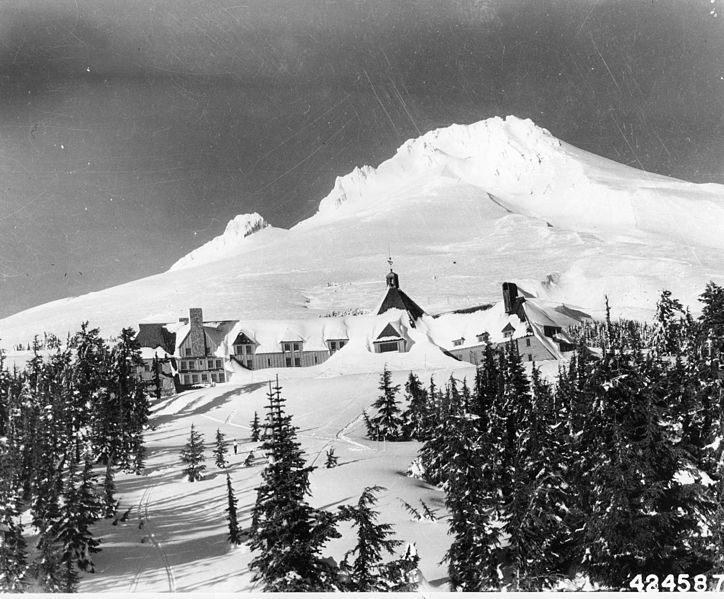 Mt. Hood and Timberline Lodge are shown under a blanket of snow during the winter of 1942. Photo by George Henderson for the U.S. Forest Service
Mt. Hood and Timberline Lodge are shown under a blanket of snow during the winter of 1942. Photo by George Henderson for the U.S. Forest Service
The Sheats Goldstein House from "The Big Lebowski"
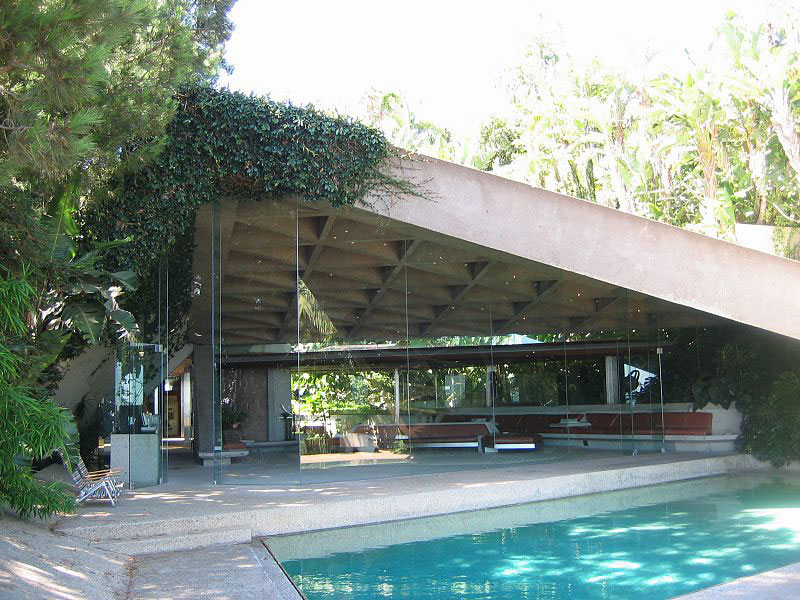 Jackie Treehorne’s pool, known in real life as the pool at the Sheats Goldstein House, by modernist architect John Lautner, in Beverly Hills, California. Photo by Arch James
Jackie Treehorne’s pool, known in real life as the pool at the Sheats Goldstein House, by modernist architect John Lautner, in Beverly Hills, California. Photo by Arch James
The Dakota from "Rosemary's Baby"
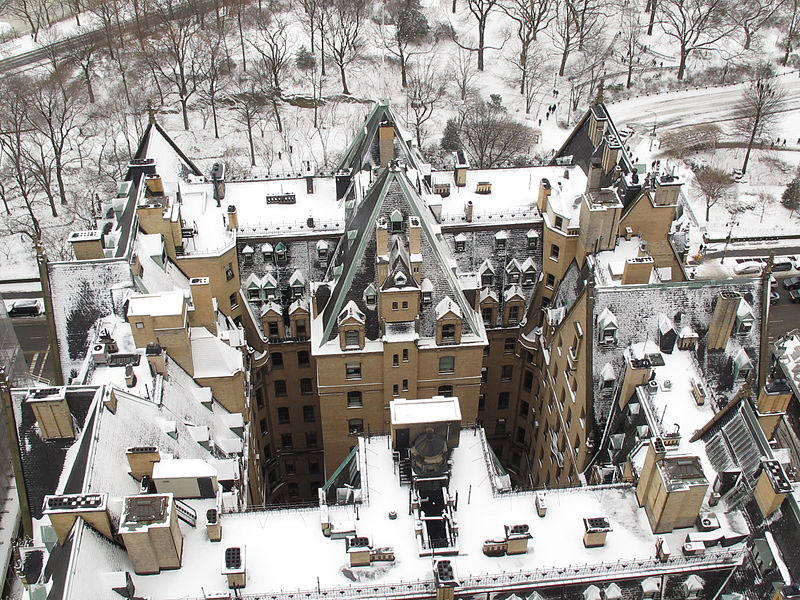 Aerial shot of The Dakota in snow. Photo by Jun
Aerial shot of The Dakota in snow. Photo by Jun
Hook & Ladder #8 from "Ghostbusters"
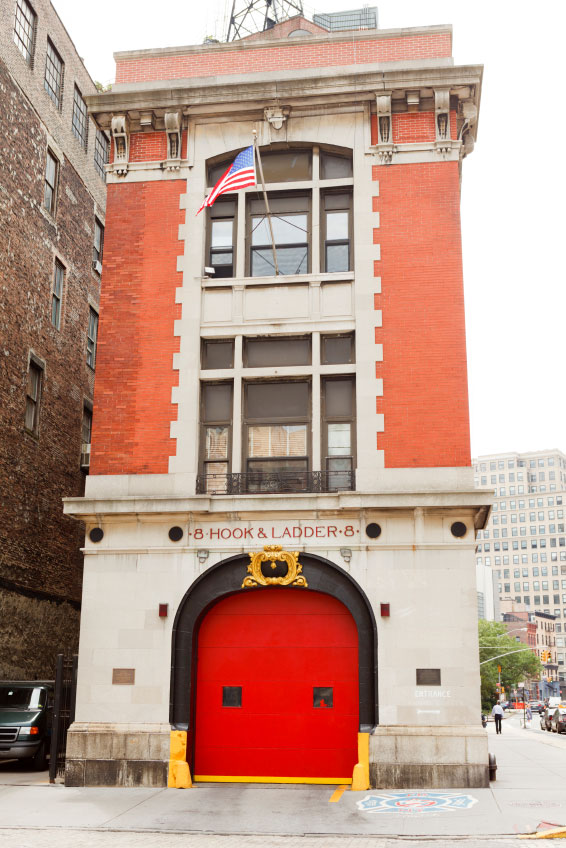
The Elrod House from "Diamonds Are Forever"
James Bond fights Bambi and Thumper in “Diamonds Are Forever,” in the Elrod House by John Lautner.The Danvers State Hospital from "Session 9"
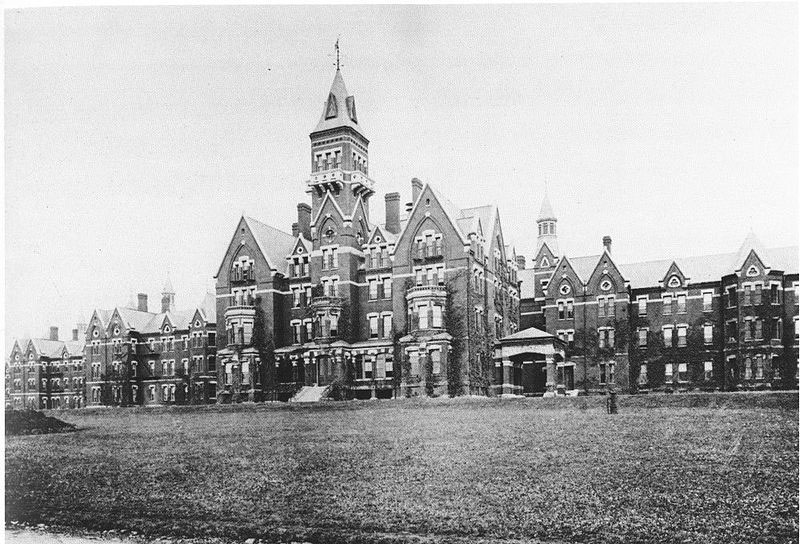 Danvers State Hospital, Danvers, Massachusetts, Kirkbride Complex, circa 1893. Architect Nathaniel Jeremiah Bradlee (1829-1888) of Boston.
Danvers State Hospital, Danvers, Massachusetts, Kirkbride Complex, circa 1893. Architect Nathaniel Jeremiah Bradlee (1829-1888) of Boston.
Al Khazneh from "Indiana Jones and the Last Crusade"
Seaside, Florida, from "The Truman Show"
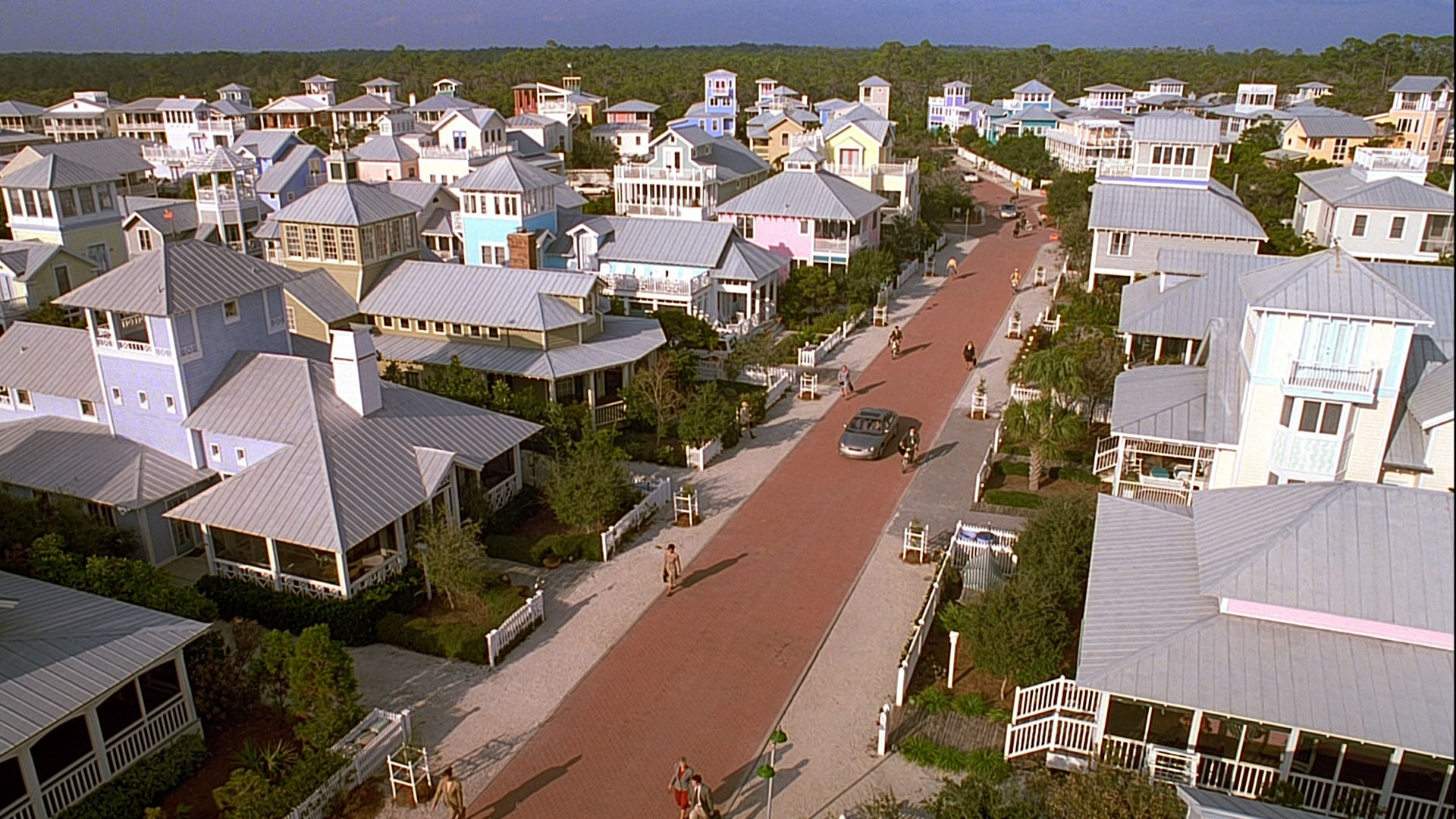 New Urbanist movement in neighborhood planning, Seaside, Florida.
New Urbanist movement in neighborhood planning, Seaside, Florida.








